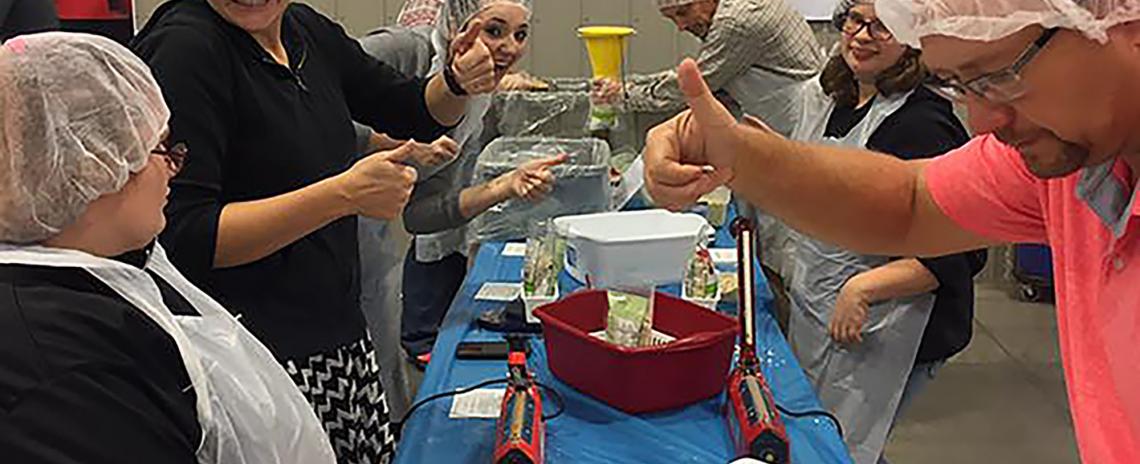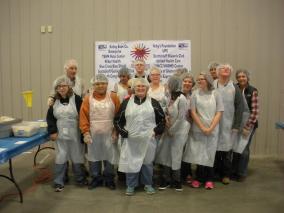Working Towards a Future: Alternative education at ESU #13 leaves no student behind
Working Towards a Future: Alternative education at ESU #13 leaves no student behind
By Tyler Dahlgren
NCSA Communications Specialist
An innovative and accommodating program when it was started nearly 20 years ago, Valley Alternative Learning Transition School in Scottsbluff has grown in size and success by holding on to original core values.
Don’t give up on a student. No matter what.
VALTS, an alternative education program designed to provide specialized instruction for students that, because of their surroundings or adverse home lives, need a second chance, came about after a meeting between administrators from Scottsbluff, Gering and Mitchell.
That was 1998, and 18 years later ESU #13 in the panhandle is at the forefront of alternative education. VALTS now serves nine districts, and has graduated 579 students that might never have walked across the stage if not for the personalized format of the program.
“Maintaining those core values is one of the reasons we have been successful,” ESU #13 Director of Alternative Education George Schlothauer said. “We haven’t deviated and gone in any other direction and we make the changes when we need to.”
In 2007, another program catered to students with particular educational needs was born. LifeLink has been easing the transition from high school to adult life for 18- to 21-year-olds in the district for the last nine years.
“The nature of transition with special education is person-centered planning, and our instructors look at every element of the student,” director of LifeLink Pam Brezenski, in her second year, said. “We look at every element of the student. When placing them in a job, we take their interests, their assessments, and where their parents think they might fight into the community into account.”
LifeLink students spend about 30-percent of their time in the classroom and the remainder at work or integrating into the community, whether it be preparing food boxes at the Jeremiah House or walking dogs at the Humane Society, an activity that VALTS students take part in, too.
The first program of its kind in the state of Nebraska, LifeLink was modeled after a program of the same name in Pennsylvania and set a precedent for a string of similar institutions across the state. There is no guidance in the form of federal guidelines for post-graduate special education programs, and Brezenski said a one-sized model wouldn’t be ideal because every community is different. So is every student.
“The nature of LifeLink offers an opportunity for a student to be engaged in the community, and the importance of that is huge,” Brezenski said. “After high school, that transition to adult life is an easier one, and that sets them up better for success.”
For VALTS, administrators are constantly working closely with the school district to identify students that would best benefit from the program. It’s not a dumping ground for hopeless cases. Quite the contrary, actually. VALTS provides a second chance, something Schlothauer thinks everybody deserves.
“We have kids that have legitimate shots at graduating, but just might have a lot going on in their personal lives,” Schlothauer said. “They need a second chance because of their surroundings. They may have a child, and can only come to school for half the day, or they may have to work just to help their family get through day-to-day.”
VALTS has a relatively new staff, and a flexible one at that. To teach in such a structure would be impossible with a high degree of caring, a word that comes up several times in the VALTS handbook.
“It doesn’t take the staff long, once they start hearing the kids’ stories, for them to understand,” Schlothauer said. “They hear about these situations and can’t believe a student is going through the things they are going through.”
Like LifeLink, VALTS places an importance on community involvement. The kids have their own mile stretch of highway to keep clean. They visit the veterans home a few times throughout the year to play games with the vets.
And still, when you’re dealing with a group of young people that have experienced hardship to the degree that VALTS students have, bumps in the road are inevitable. When graduation approaches, some students will sabotage themselves out of a fear of losing that structure that the school provides. More often than not, it doesn’t exist at home. VALTS instructors keep working. Keep pushing their students towards the light at the end of the tunnel.
“Once they do graduate, it’s super rewarding,” Schlothauer said. “And then, several months later, for them to call us, or email us just to let us know how they’re doing, that makes it all worth it.”
Those moments present themselves often in the special education arena as well, Brezenski said. One student, for example, came in to the program nearly completely mute. Three years later, that same student was initiating conversation. LifeLink had literally given a voice to a young person that lacked the confidence to speak out before.
“That may seem small to some people, but for us it’s the world,” Brezenski said. “It means that student has a voice now. They’re able to live the life everyone else can. There is no better feeling in your heart than when you get that moment.”
That’s why VALTS and LifeLink teachers show up every day.
“Even just the smile of one of our students can change your day,” Brezenski said. “To significantly change the course of their lives, that touches our lives.”



